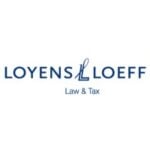-
What are the most common types of corporate business entity and what are the main structural differences between them?
The two most common types of corporate business entity in the UK are private companies limited by shares and public limited companies (“PLCs”). Each type of company has a share capital, which is held by members called “shareholders”. Both private companies and PLCs are regulated primarily by the UK’s Companies Act 2006 (the “Companies Act”) and secondary legislation made under the Companies Act. Private companies and PLCs are similar in most respects, but there are some important differences, perhaps the most significant of which is that a PLC is permitted to offer equity or debt securities to the public, whereas a private company cannot. For this reason, PLCs are subject to more stringent requirements under the Companies Act, including in relation to minimum share capital, changes to capital structure, paying dividends, the timing and content of financial statements, number of directors and how shareholder decisions are made.
PLCs are eligible to apply for their shares to be admitted to trading on a securities exchange and, if necessary, to be listed on the UK’s Official List, which is maintained by the Financial Conduct Authority (the “FCA”). The Official List underwent significant reforms recently, with new UK Listing Rules coming into force on 29 July 2024. These changes represent the most substantial overhaul of the UK’s listing regime in four decades and resulted in a new “UK Listing Rules” sourcebook. The new rules replaced the FCA’s former “premium” and “standard” listing categories with a single category for the equity shares of commercial companies (“ESCC”) admitted to the Official List. The rules for the ESCC category are a simplified version of those that were previously applicable to the premium listing segment but are slightly more onerous than the standard listing segment. There is also no definition of what constitutes a “commercial company”, which was left intentionally broad.
A listing means that a PLC is subject to more regulations, with the extent of those regulations depending on (among other things) the market to which its shares are being admitted. Please see question 5 below for a further discussion of these regulations.
The term “public limited company” refers to the legal structure of a company and does not necessarily indicate that its securities are admitted to a trading platform. Therefore, a company might be a PLC but not a “public company” in the colloquial sense. In the UK, it is common to use the term “publicly traded company” or, erroneously but nonetheless often, “listed company” to describe a company whose shares are publicly traded.
In this chapter, we occasionally use the terms “listed company” and “listed companies” given their widespread market usage, despite the technical inaccuracy.
Other types of corporate structure beyond limited companies do exist, but they tend to be used only in specific circumstances. For example, partnerships and limited liability partnerships (“LLPs”) are often used for professional services businesses, such as accountancy, legal, consultancy, and medical practices, as well as for specific purposes within fund structures. Entities such as open-ended investment companies (the UK equivalent of a Société d’Investissement à Capital Variable (SICAV) are often used for retail investment funds. There are also types of entity that are used in a not-for-profit context (for example, for charitable purposes). Because each of these types of entity are significantly less common, we do not discuss them in further detail in this chapter.
-
What are the current key topical legal issues, developments, trends and challenges in corporate governance in this jurisdiction?
From ESG to competitive sustainability
The public, investors and UK Government (the “Government”) have increasingly focused on Environmental, Social and Governance (“ESG”) issues in recent years. This is reflected in the continued interest by businesses to demonstrate their commitment to ESG training and compliance. London, and the UK more broadly, is noted as a leader in B Corp accreditations. Listed companies and other large companies are now required to report on climate-related financial disclosures, and there are proposals to mandate net-zero transition plan reporting for the largest companies.
However, the ESG movement has faced significant challenges and criticisms. Despite the rise of reporting regulations and voluntary initiatives, there is growing concern that the ESG approach has not driven the necessary systemic changes to tackle climate change and nature depletion effectively. The Cambridge Institute for Sustainability Leadership has argued that the ESG project has failed to deliver the wholesale change needed, as some would argue that it remains more financially beneficial in the short term for businesses to operate unsustainably. This has led to calls for a shift towards “competitive sustainability,” which emphasises the need for strong government policy and a change in business mindset to achieve systemic market transitions.
The Financial Reporting Council published an updated version of the UK Corporate Governance Code (“UK CGC”) in 2024 which diluted several corporate governance recommendations related to ESG matters following public consultation and stakeholder feedback. Similarly, the Government has withdrawn new draft legislation that would have introduced additional reporting requirements for companies with 750 or more employees and a turnover of £750 million or more, citing the need to reduce regulatory burdens and enhance the global perception of the UK as a competitive marketplace.
That said, the UK has not experienced the level of “anti-ESG” backlash from some investor groups that other jurisdictions (notably, the US) have seen. It seems safe to assume that ESG remains, and will remain, a key priority and focus for most UK businesses. However, there is a growing recognition that more direct and robust actions are required to achieve meaningful sustainability outcomes.
Generative AI
The regulatory landscape for artificial intelligence (“AI”) in the UK has evolved significantly in recent years. In March 2023, the Government published its AI regulation white paper advocating a pro-innovation, risk-based approach to AI regulation. Additionally, in the King’s Speech in July 2024, the new Labour Government announced its intention to introduce new bills to regulate AI, alongside cybersecurity and digital information bills. This approach aims to balance the benefits of AI deployment with the need for accountability and respect for the rule of law. The Legal Services Board’s AI strategic plan aligns with this approach, pledging a pro-innovation stance to the regulation of AI. The plan also emphasises an outcomes-based rather than technology-specific approach to regulation, which is intended to provide a flexible framework to facilitate information sharing.
Corporate governance in the context of generative AI in the UK involves ensuring compliance with existing laws and regulations, particularly around data privacy and cybersecurity. Companies in the UK must conduct due diligence on AI tools, including supplier due diligence, to ensure that their data input is protected and stored securely. Ethical considerations are also crucial, with principles such as compliance, lawfulness, capability, transparency, and accountability guiding the use of AI tools. Public sector bodies must consider the Public Sector Equalities Duty (PSED) when using AI systems, ensuring that these tools do not perpetuate biases or discriminatory practices.
Corporate governance and transparency
The way in which UK companies are managed has remained broadly consistent for decades. The Economic Crime and Corporate Transparency Act 2023 has been introduced to improve corporate transparency in the UK and reform the centralised UK company register (at Companies House) to combat economic crime.
Among other things, the Act will introduce from autumn 2025 compulsory identity verification checks for company directors and persons with significant control of companies incorporated in the UK. For new companies, directors will need to complete identification verification checks on incorporation, individual PSCs will have 14 days to verify their identity and existing RLEs will have 28 days to verify their identity from the time of registration at Companies House. Companies which are already incorporated can complete their checks at the time that their confirmation statements become due. The objective here is to improve and protect the integrity of the data on a company’s register as part of an ongoing fight against organised corporate crime.
Additionally, the UK Government also intends to introduce a long-anticipated ban on corporate entities serving as a director of a UK company (so called “corporate directors”). It is understood that any corporate directors of companies will be restricted so that any corporate director of a company must have an all-natural person board. All the directors of the corporate director entity will be required to verify their identify in order for the corporate director to be registered. Overseas companies will also be prohibited from acting as corporate directors of companies in the UK.
Gender and ethnic diversity
In the UK, organisations with 250 or more employees must publish metrics on the disparity in pay between their male and female employees (their “gender pay gap”). The Hampton-Alexander Review, which set a target of 33% female representation on FTSE 100 company boards by 2020, was seen as a successful step on the path towards gender equality in senior management. The latest FTSE Women Leaders Review (which replaced the Hampton-Alexander Review) dated February 2024 reported female representation on FTSE 350 Boards had increased beyond 40%. According to the Review, the UK sits second in the international rankings for women’s representation on boards at FTSE 350 level behind France, exceeding the level of female representation in countries such as Norway that impose mandatory gender quotas on businesses.
The Parker Review was established to conduct an official review into ethnic diversity on UK company boards. It found that the boards of leading public companies fell short in reflecting the ethnic diversity of the UK. The Review noted that only 70% of the FTSE 250 were able to meet their target of at least one ethnic minority director on their board, whilst 96% of FTSE 100 companies were able to meet their targets.
In addition to mandatory gender pay gap metric reporting, listed companies must also comply with board and executive diversity reporting requirements set out in the FCA’s UK Listing Rules. These require companies to: (i) report against specific gender and ethnicity targets; (ii) provide a numerical breakdown of their directors’ gender and ethnicity; and (iii) explain their diversity policy not only for the board, but also their audit, remuneration and nomination committees.
The Government has also published guidance on ethnicity pay-gap reporting, which is not mandatory under UK law. This is aimed to assist employers wishing to publish this information voluntary to develop a consistent approach to reporting, especially given that ethnicity pay-gap reporting is more complex than gender pay-gap reporting. By following this guidance, employers can ensure greater transparency and contribute to addressing disparities in the workplace.
-
Who are the key persons involved in the management of each type of entity?
Decision-making in a UK company is divided between its economic owners (its shareholders) and its managers (its directors and certain other senior employees). The general rule is that the directors of a UK company are responsible for its day-to-day management, and that shareholders do not participate in a company’s management except in certain specific respects (see question 4 below).
A company’s directors are known collectively as its “board”. The role of “director” is a statutory office that carries with it significant powers, responsibilities and liabilities. Directors of a company are considered “fiduciaries” and “quasi-trustees” and are subject to a series of stringent duties to act in good faith, independently, carefully and in the company’s best interests.
There are few restrictions on who can act as a director. In particular, UK companies are not required to have any directors who are resident in the UK. However, a person must be at least 16 years old to serve as a director, and there are certain circumstances in which a person can be disqualified from acting as a director, either by law or under a company’s constitution. In addition, the Companies Act requires UK companies to have at least one director who is a natural person. A UK company may also appoint corporate entities to act as directors, however, as noted above, 4an authorised individual must be selected to act on behalf of the corporate director within the limited company, and the UK company must also have at least one natural director already appointed.
The directors of a company can also delegate day-to-day responsibility for specific matters to a committee of persons (see question 6 below) or to specific individuals. It is common to delegate responsibility in specific areas to senior managers who are not formally appointed to the board (although they may be permitted to attend board meetings from time to time). For example, responsibility for human resources may be delegated to the Head of HR and responsibility for legal matters to the General Counsel. In some cases, these persons might be described informally as a “director” despite not occupying the statutory office of director. A discussion of “shadow” and “de facto” directors is beyond the scope of this chapter.
-
How are responsibility and management power divided between the entity’s management and its economic owners? How are decisions or approvals of the owners made or given (e.g. at a meeting or in writing)?
As a general rule, all day-to-day management of a company’s affairs is delegated to its directors. The company’s constitution (see question 6 for more discussion) will set out how the directors make decisions, typically through board meetings or by passing written resolutions.
Certain decisions are reserved for the company’s shareholders by legislation and the company’s constitution. For example, the Companies Act sets out certain matters which can only be decided by shareholders (except, in some cases, where the company’s constitution delegates the discretion to the directors). These matters include changes to the company’s name, legal form, constitution and capital structure, the removal of directors and auditors, the authority to allot shares and make purchases of a company’s shares, and the disapplication of statutory pre-emption rights on the allotment of shares.
Additionally, a company’s constitution usually allows shareholders to appoint directors, declare final dividends and authorise directors’ conflicts of interest. However, except for the matters specifically reserved to the shareholders, they generally do not participate in the decision-making process. This applies equally to private and public (and indeed listed) companies. As noted in question 1, the FCA adopted new listing rules in July 2024 which removed the requirement for shareholder approval for significant or large related party transactions. Nevertheless, publicly traded companies are still required to seek shareholder approval for certain matters, such as cancellations of listings, share buyback arrangements and reverse takeovers.
Shareholders of PLCs must make decisions at a general meeting. Shareholders of private companies can also make decisions at a general meeting, but it is more common to do so by way of a written resolution. General meetings are regulated by the Companies Act and a company’s constitution. A meeting can proceed only if a “quorum” is present, typically two shareholders present in person or by a proxy or representative, unless the company has only one shareholder. Generally, shareholders have the right to attend, speak and vote at general meetings, although these rights can be varied in the company’s constitution. Voting at a general meeting is conducted either on a show of hands (usually, one vote per shareholder) or on a poll (usually, one vote per share). However, members may have the right to demand a poll, and certain publicly traded companies are required to hold votes by way of poll.
General meetings can be held as physical meetings, hybrid meetings (where some attendees participate remotely), or purely virtual meetings although, there is some doubt over the validity of purely virtual meetings under English law. The uncertainty arises following the expiry of the Corporate Insolvency and Governance Act 2020 which previously permitted virtual meetings (during the COVID-19 pandemic). As such, most companies hold their annual general meetings (AGMs) and other general meetings in person or as hybrid meetings.
As noted above, private companies often pass shareholder resolutions by way of a written resolution. This involves the board circulating a written document to shareholders setting out the proposed resolutions and shareholders simply mark whether they vote in favour or against. Voting on written resolutions is calculated in the same way as on a poll.
Generally, resolutions take the form of either an ordinary resolution, which requires a simple majority of votes in favour, or a special resolution, which requires at least 75% of votes in favour. The Companies Act often prescribes which threshold applies. In some cases, a company can raise the voting threshold in its constitution, although this is very unusual.
-
What are the principal sources of corporate governance requirements and practices? Are entities required to comply with a specific code of corporate governance?
There is no single, overarching piece of corporate governance legislation in the UK. The UK’s corporate governance regime comprises a somewhat disparate array of domestic and EU-derived laws, many of which are not solely corporate governance-focused. Additionally, regulator and investor guidance often varies depending on the size of the business and whether its securities are publicly traded.
Legislative sources of corporate governance include the following:
- Companies Act and secondary legislation: Directors owe certain statutory duties to their company, including a duty in section 172 to promote the success of the company for the benefit of its members as a whole. In discharging this duty, the directors must “have regard” to certain factors, including the company’s employees, its impact on the community and the environment, and its relationship with customers, suppliers and others. This applies to all companies, regardless of size and listing status. Under accounting regulations, large companies must report publicly on how their directors have discharged their duty in section 172 and describe specifically how they have considered employees, customers and suppliers. Large and publicly traded companies are also required to provide greater disclosure on certain corporate governance and ESG matters, including respect for human rights, anti-corruption and anti-bribery matters. Very large companies are also required to publish an annual “corporate governance statement”, explaining the corporate governance arrangements they applied during the previous financial year.
- Streamlined Energy and Carbon Reporting regime (“SECR”): Larger companies must report their annual greenhouse gas (GHG) emissions and energy usage. Publicly traded companies are subject to more extensive SECR obligations.
- Climate Change Act 2008: The UK’s principal climate change statute sets a target of a 100% reduction of UK GHG emissions by 2050 compared with 1990 levels. The bulk of the obligations are placed on the Government, rather than organisations, but the statute includes a carbon-trading regime for larger organisations. As noted in question 2 above, under the UK’s gender pay-gap reporting regime, companies with 250 employees or more on a “snapshot date” (currently, 31 March for the majority of public authority employers and 5 April for private, voluntary and other public authority employers) must publish data on the disparity in pay (gender pay gap) between their male and female employees.
- Modern Slavery Act 2015: Companies that supply goods or services, do business in the UK and have an annual turnover of £36 million or more must publish an annual “slavery and human trafficking statement”, explaining the steps they took in the previous year to eliminate modern slavery in their organisations and supply chains.
Other relevant corporate governance and ESG-related legislation includes the Bribery Act 2010, the Corporate Manslaughter and Corporate Homicide Act 2007, the Equality Act 2010 and the Economic Crime and Corporate Transparency Act 2023. Pension funds are also subject to additional disclosure requirements under pension legislation.
A significant amount of the UK’s corporate governance and ESG framework exists not in legislation or regulation, but in guidance and technically non-binding codes:
- For very large private companies, the so-called “Wates Principles” encapsulate similar, albeit less prescriptive, disclosure requirements, including in relation to purpose and leadership, remuneration, and stakeholder relationships and engagement. The Wates Principles are optional and operate on an “apply and explain” basis.
- For private equity investors and their portfolio companies, a separate set of reporting guidelines, known as the Walker Guidelines, exists. The Walker Guidelines are a set of voluntary requirements that promote transparency and disclosure in the private equity industry. Investor associations and proxy advisors regularly issue guidance and policies in relation to corporate governance and ESG matters, both for publicly traded companies and for companies in specific sectors.
- For large publicly traded companies, the UK CGC provides disclosure and governance guidance on various corporate governance matters, including promulgating the company’s culture and mission statement and engagement with stakeholders generally and with the company’s workforce in particular.
- For small and mid-sized publicly traded companies, other corporate governance codes include (most notably) the Quoted Companies Alliance Corporate Governance Code.
Publicly traded companies are subject to further disclosure requirements. The FCA’s UK Listing Rules require listed commercial companies to “comply or explain” against the Task Force on Climate-Related Financial Disclosures (TCFD) Recommendations. For financial years beginning on or after 6 April 2022, a similar obligation applies to a broader range of entities with more than 500 employees.
Under the Disclosure Guidance and Transparency Rules (the “DTRs”), companies whose securities are admitted to a UK regulated market are required to publish a corporate governance statement, stating which corporate governance code they have adopted and how they have complied with it. For listed companies, the FCA’s UK Listing Rules require this to be the UK CGC. Certain publicly traded companies are also required to disclose more extensive information on their directors’ remuneration and to develop a binding remuneration policy.
Additional regulations that will or may apply includes the UK Market Abuse Regulation, the UK Prospectus Regulation (which is set to be replaced shortly with the new Prospectus Rules: Admission to Trading on a Regulated Market sourcebook), the Prospectus Regulation Rules and the specific rules of the relevant securities exchange.
-
How is the board or other governing body constituted? Does the entity have more than one? How is responsibility for day-to-day management or oversight allocated?
The constitution of a company’s board is set out in the company’s constitutional documents, particularly its articles of association. These articles typically specify the minimum and sometimes maximum number of directors the company may have, as well (in rare cases) as any specific qualification criteria. A company’s board can comprise executive directors and non-executive directors (NEDs). The boards of most non-publicly traded companies comprise only executive directors, although some larger companies may also appoint NEDs. Publicly traded companies will invariably appoint NEDs.
Executive directors are responsible for the day-to-day running of the company and making business decisions. They often hold functional titles such as Chief Executive Officer (CEO), Chief Financial Officer (CFO), Chief Operating Officer (COO) and Chief Technical Officer (CTO). NEDs do not participate in the daily management of the company. Rather, they scrutinise and challenge the decisions of the executive directors. NEDs typically do not hold specific roles, although in larger companies, a NED may serve as the Chair or Senior Independent Director (SID) of a company. In addition, under the UK CGC, listed companies may appoint a NED as a liaison between the board and the workforce. See question 8 below for more information on NEDs.
Unlike in some jurisdictions, where a company may have a “supervisory board” and a separate “management board”, UK companies have a single, unitary board. Despite the different day-to-day roles of executive directors and NEDs, there is no legal distinction between them; all directors have the same powers, duties, and potential personal liabilities. This means that NEDs must actively engage in the company’s affairs rather than taking a passive role.
As a general rule, a company’s directors take decisions in board meetings. As with shareholder meetings, a minimum quorum is normally required for business to take place; this varies from company to company. Matters are normally decided by a majority of the directors in attendance, with each director having one vote, although this can be modified in the company’s constitution. Indeed, weighted voting rights and more complex quorum requirements (e.g., an investor-appointed director being required for a quorum) are common in certain structures, such as private equity backed groups and joint ventures.
It is now generally accepted that directors can hold board meetings by telephone or video conference, provided all the directors attending the meeting can see and hear each other. A company’s constitution will often also allow its directors to take decisions by a resolution in writing without a meeting. However, because a written resolution eliminates the ability to debate and discuss matters, any board decision taken in writing normally needs to be unanimous.
A company’s constitution may allow its directors to delegate responsibilities to board committees. These committees often include directors, but non-directors (such as senior managers) can also serve as committee members. Typical committees include: a nomination committee, which is responsible for director appointments and succession planning; an audit committee, which is responsible for internal audit and reporting and choosing the company’s external auditor; a remuneration committee, which is responsible for setting the directors’ compensation and, increasingly, for setting workforce remuneration generally; and a risk committee, which handles internal risk reporting and compliance responsibilities. Boards are increasingly establishing additional committees, such as those focused on sustainability, corporate social responsibility or ESG committee.
UK company law does not require a board to establish committees, nor does it set out the membership requirements or remit of committees. However, companies with securities traded on a UK regulated market are required to establish an audit committee. The UK CGC also recommends that listed companies establish nomination and remuneration committees, and sets out specific independence requirements for members of these committees. Delegating to a committee does not, however, absolve directors of their duties. Directors remain primarily liable for the company’s operations and must act diligently and reasonably when delegating their duties and selecting committee members.
-
How are the members of the board appointed and removed? What influence do the entity’s owners have over this?
The power to appoint directors is set out in a company’s constitution (principally, its articles of association). Typically, the board has the authority to appoint an additional director without requiring shareholder approval. However, for publicly traded companies and (occasionally) for non-publicly traded companies, a director appointed by the board will be subject to re-election by the shareholders, usually at the next AGM. In addition, a company’s constitution generally grants shareholders the power to appoint directors by ordinary resolution.
A director leaves office by resigning, being removed or automatically vacating office. Generally, director can resign voluntarily at any time. A company’s constitution may set out certain circumstances under which a director automatically vacates office. These circumstances typically include death of a director, declaration of bankruptcy, disqualification from acting as a director, failure to attend a specified number of successive meetings, inability to be contacted or physical or mental incapacity to perform the role of director. Although these situations are described as “automatic”, the board often needs to agree that the relevant circumstances have arisen, effectively amounting to a removal. Apart from these circumstances, a director can be removed only by the company’s shareholders passing an ordinary resolution under the Companies Act. The procedure for this is more complex than other shareholder resolutions. The director in question must be given extended notice of the proposed resolution and is entitled to circulate a statement and make representations to the shareholders. For listed companies, the UK CGC encourages a transparent procedure for the appointment of directors. If a company has a nomination committee, it is typically responsible for overseeing the search and selection process, as well as succession planning for when directors retire. The nomination committee’s terms of reference often encompass these functions. The office of director is separate from employment status. So, although a company may be entitled to remove a director, the director may nonetheless be entitled to claim for breach of their employment contract or unfair dismissal if the removal is not justified by some ground.
-
Who typically serves on the board? Are there requirements that govern board composition or impose qualifications for board members regarding independence, diversity, tenure or succession?
As noted in question 6 above, normally the boards of non-publicly traded companies comprise executive directors only. The boards of larger and publicly traded companies typically comprise a mix of executive directors and NEDs. There are no restrictions in law on who can serve as a NED. However, the UK CGC sets out certain criteria for listed companies. These include that at least half of the company’s board (excluding the Chair) should comprise independent NEDs, the roles of CEO and Chair should not be combined, and the CEO of a company should not go on to become its Chair. The UK CGC states that a listed company should identify each NED considered to be independent in its annual report. If the company has established a nomination committee, that committee will have responsibility for nominating new directors, arranging succession-planning for existing directors and implementing the company’s diversity policy. The UK CGC sets out a list of non-exhaustive criteria that may impair (or appear to impair) a NED’s independence. These include where a director: is or has been an employee of the company or group within the last five years; has, or had within the last three years, a material business relationship with the company (either directly or indirectly); has received or receives additional remuneration from the company apart from a director’s fee, participates in the company’s share option or a performance-related pay scheme or is a member of the company’s pension scheme; has close family ties with any of the company’s advisers, directors or senior employees; holds cross-directorships or has significant links with other directors through involvement in other companies or bodies; represents a significant shareholder; or has served on the board for more than nine years from the date of their first appointment.
Board committees (particularly audit and risk committees) are often tasked with considering specific corporate governance and/or ESG matters. As noted in question 6 above, some entities establish dedicated sustainability, ESG or health and safety committees to provide oversight of corporate governance and ESG matters and report to the board on these issues. There is no requirement in law to have an ESG committee. However, dedicated ESG committees can play a role by aligning the company’s agenda with changing ESG trends or requirements and to recommend changes to the board.
-
What is the role of the board with respect to setting and changing strategy?
Responsibility for setting and changing the company’s overall business strategy rests with the company’s directors. As noted in question 6 above, the directors can delegate responsibility for certain discrete elements of strategy to specific persons, but responsibility ultimately lies with the board. In reaching decisions on strategy, directors must bear in mind their statutory duties to the company. This includes, in particular, their duty under section 172 of the Companies Act to promote the success of the company for the benefit of its members as a whole. When discharging their duty under section 172, the directors must consider the likely long-term consequences of any decision. Therefore, the directors must consider carefully whether the company’s strategy and business plan are likely to generate value for shareholders. Directors should focus not solely on current shareholders, but also on the shifting body of shareholders over time. Larger companies are required to explain their business model and strategy in their annual report, as well as the principal risks they face. The Financial Reporting Council (“FRC”), the UK’s principal corporate reporting supervisory body, has issued substantial guidance on matters that directors should consider when deciding on the company’s strategy and describing risks. Historically, risks have concentrated on commercial concerns, but increasingly companies are expected to report on corporate governance, anti-money laundering and client due diligence in their risk statements.
For listed companies, the UK CGC requires a company to publish a “longer-term viability statement”. This statement must set out the principal risks to the company’s continued viability over a protracted period. There is no prescribed period for a longer-term viability statement, although typically periods have ranged from three to five years. It is increasingly common for companies to establish non-financial key performance indicators (“KPIs”) to measure the extent to which the company is achieving its objectives, and some companies are even feeding these KPIs into director remuneration metrics and performance evaluations.
-
How are members of the board compensated? Is their remuneration regulated in any way?
Directors’ remuneration will be governed by their service contracts with the company. The Companies Act sets out various restrictions on payments to directors, including in connection with loss of office. However, for non-publicly traded companies, directors’ remuneration is largely unregulated. Nonetheless, when setting their remuneration, directors must ensure they are complying with their statutory duties, including to promote the company’s success. Global proxy advisers also issue guidance on directors’ remuneration. For example, the latest Institutional Shareholder Services (ISS) guidelines published on 9 January 2025, states that annual salary increases are expected to be low and ideally lower proportionally than general increases across the workforce. Furthermore, they advise that post-freeze ‘catch-up’ salary increases, or benchmarking-related increases generally are not supported.
For certain types of publicly traded company, the directors must publish a formal directors’ remuneration policy. The policy forms part of the company’s directors’ remuneration report and sets out the proposed remuneration, including incentive arrangements, for the directors over a specific period. The remuneration policy, which is forward-looking, must be put to a binding vote of the shareholders at least once every three years. The remaining parts of the remuneration report, which are backward-looking, must be put to an annual advisory (non-binding) shareholder vote. The company may not make any payments to directors outside of the terms of its remuneration policy. Whilst there is no legal requirement for them to do so, it is not uncommon for directors of larger and publicly traded companies to hold shares (or contingent entitlements to receive shares) in the company that will be linked to their performance as director. Indeed, it is common for directors of companies, particularly publicly traded companies, to be remunerated by means of share awards. For listed companies, the UK CGC sets out parameters in relation to the grant and vesting of share awards, and various investor associations have issued guidance on this point.
Under the Companies Act and secondary legislation, companies are required to report on their directors’ remuneration. The level of disclosure increases incrementally with the size of the company. At one end of the spectrum, directors of certain publicly traded companies must prepare a directors’ remuneration report for each financial year, setting out details of its directors’ remuneration for the previous financial year, including a breakdown of individual remuneration for each director and the ratio of the CEO’s pay to that of the company’s workforce generally. The remuneration report (other than the remuneration policy section) is subject to an annual non-binding shareholder vote. Investor associations have published guidance on director remuneration reporting generally. For example, the GC100 Investor Group has issued best practice guidance for director remuneration disclosures. In particular, it encourages companies to explain any deviations from the company’s policy implementation procedure and to indicate the percentage change of each director’s salary or fees, benefits and short-term incentives in comparison to the average of full-time employees. For listed companies, the UK CGC sets out detailed provisions on directors’ remuneration and the procedure for determining an individual director’s remuneration. This includes the composition and role of the remuneration committee in setting directors’ remuneration.
-
Do members of the board owe any fiduciary or special duties and, if so, to whom? What are the potential consequences of breaching any such duties?
A director owes statutory duties to their company under sections 171 to 177 of the Companies Act. These are duties:
- to act within their powers, which includes acting in accordance with the company’s constitution;
- to promote the success of the company for the benefit of its members as a whole;
- to exercise independent judgment;
- to exercise reasonable care, skill and diligence;
- to avoid conflicts of interest;
- not to accept benefits from third parties; and
- to declare an interest (if any) in a proposed transaction or arrangement with the company.
As noted in questions 5 and 9 above, when considering what is most likely to promote a company’s success, directors must “have regard” to wider stakeholder needs, including: the likely consequences of any decision in the long-term; the interests of the company’s employees; the need to foster the company’s business relationships with suppliers, customers and others; the impact of the company’s operations on the community and the environment; the desirability of the company to maintain a reputation for high standards of business conduct; and the need to act fairly as between shareholders of the company. In addition to these statutory duties, directors also owe certain residual legal duties to the company of which they are a director. These include a duty of confidence and, some argue, a general duty of “loyalty”. A director’s duties are owed to the company, not to its shareholders. It is the company that must therefore bring legal action against a director who is in breach of duty.
The remedies available to the company against a director depend on the nature of the breach and the specific duty breaches, but commonly they will include a right to claim damages or compensation, to recover any property that has been misappropriated, and to recover any profit the director has made. Because a director’s duties are owed to the company, the general rule is that a shareholder is unable to bring direct action against a director. However, in certain circumstances, a shareholder may be able to bring legal action against a director in the company’s name, and there are certain (unusual) circumstances in which directors can assume liability directly towards shareholders (see question 18 below). If a company is insolvent or approaching insolvency, the primary focus of the directors’ duties shifts from the company’s shareholders to its creditors and, in some very limited situations, certain director duties to the company can continue after liquidation.
-
Are indemnities and/or insurance permitted to cover board members’ potential personal liability? If permitted, are such protections typical or rare?
The Companies Act prohibits a company from absolving its own directors of liability for any negligence, default, breach of duty or breach of trust committed while in office. Similarly, the Companies Act prohibits a company from indemnifying its own directors, or the directors of any of its associated companies, from liability of this kind. The purpose of these prohibitions is to ensure that directors cannot abuse their position of trust and use a company’s reserves to protect themselves from liability for their own reckless acts. There are certain exceptions to this rule. For example, a company is allowed to indemnify its directors against liability they incur towards someone other than the company or an associated company in connection with acting as a director. This is known as a qualifying third-party indemnity. There are some exceptions to this: the company cannot indemnify a director against criminal and civil fines, or against the costs of criminal or civil proceedings in which the director is unsuccessful. In addition, companies are permitted to indemnify their directors against any liability incurred in connection with acting as a director of a company that administers an occupational pension scheme for the company. This is known as a qualifying pension scheme indemnity. Finally, companies are permitted to take out directors’ and officers’ liability (D&O) insurance to provide cover for their directors and officers (and often other senior executives) in relation to claims made against them for “wrongful acts”. The D&O insurance market in the UK is well-developed. A company seeking D&O insurance should retain a broker to advise it on the most appropriate policy for it, as well as legal advisers to review the terms of cover and any potential applicable exclusions and qualifications. However, there is no prohibition on a shareholder indemnifying a director against liability (unless the shareholder is an associated company). Indeed, where a director has been appointed as the representative of a shareholder (for example, in a joint venture or in a private equity backed company), it is common for the shareholder to provide indemnification for the director as part of agreeing to take on the role.
-
How (and by whom) are board members typically overseen and evaluated?
There is no specific legal requirement for directors to undergo oversight or performance evaluations. Instead, the directors of a company are expected to monitor their own performance as part of their broader duties to the company. In practice, oversight and evaluation of members of management varies from company to company, depending on the management structure and complexity of the company. For smaller private companies, the evaluation process may be limited to an annual review by the company’s internal HR function. For larger private and public companies, the evaluation process is likely to be more rigorous and detailed, especially for listed companies where shareholders typically take a deeper interest in the actions and behaviour of management. For listed companies, the UK CGC requires a formal annual performance review of the board, its committees, the Chair and individual directors. In FTSE 350 companies, this type of review should happen at least once every three years. The Chair should consider arranging a review by an external reviewer and should act on the results of any review by recognising the strengths and addressing any weaknesses of the board. Each director is encouraged to engage with the process and take appropriate action where required. The UK CGC states that NEDs should scrutinise management, individual executive directors and the Chair and hold them to account against agreed performance objectives. The Chair should also hold separate meetings with NEDs without the executive directors present to facilitate scrutiny.
-
Is the board required to engage actively with the entity’s economic owners? If so, how does it do this and report on its actions?
There is no strict legal obligation for directors to consult with shareholders. However, consulting with shareholders is naturally sensible considering the directors’ overriding duty under the Companies Act to promote the success of the company for the benefit of its members as a whole. Where the company is closely held, is backed by a financial sponsor or is a joint venture, it is common for the company and its shareholders to enter into a shareholders’ agreement. This may require the company and the directors to consult with shareholders, provide them with information and even seek their consent before taking a proposed action.
For publicly traded companies, it is common for the board to engage regularly in dialogue with the company’s shareholders, particularly any significant institutional investors. Shareholders of publicly traded companies also have numerous opportunities to engage with the company’s boards. AGMs and any other general meetings provide a regular forum for discussion between the board and the shareholders. For listed companies, the UK CGC requires the Chair to monitor and foster a healthy relationship with shareholders by seeking regular engagement to understand their views on governance and performance against the company’s strategy. Additionally, the UK CGC require the boards of listed companies to appoint one of its independent NEDs as a “Senior Independent Director” to act as a second intermediary (other than the Chair) between the board and shareholders. The chairs of any board committees should also seek engagement with shareholders on significant matters related to their areas of responsibility.
Beyond legislation, certain institutions, most notably, the Investor Forum, have lobbied for a notion of “collective engagement” and been instrumental in facilitating dialogue between institutional investors and companies. In the UK, the FRC has published the Stewardship Code, which sits alongside the UK CGC and is designed to encourage institutional investors, asset managers and their service providers to engage in sustainable and responsible investment and stewardship. Whilst previously aimed primarily at investments in listed companies, the Code now applies to investments across all asset classes, including private equity portfolios. Adherence to the Code is, with a few small exceptions, voluntary, with signatories required to report annually on their methods of engagement. However, it presents an incentive for renewed efforts.
-
Are dual-class and multi-class capital structures permitted? If so, how common are they?
UK companies can have multiple classes of shares with varying rights, such as dividend entitlements, voting rights and board appointment rights attached to them. It is common for a company to issue equity shares (such as “ordinary shares”), which give the holder a right to participate in a percentage of the company’s profits and typically carry full voting rights, and non-equity or debt shares (such as “preference shares”), which give the holder a right to a fixed return and usually carry more limited, or no, voting rights. Despite their name, non-equity shares are not debt instruments and do not confer the right to enforce payment or force a company into liquidation. Publicly traded companies often have both equity and non-equity shares admitted to trading.
Dual-class listings have historically been less common in the UK then in other jurisdictions (such as the United States) due to stringent conditions and restrictions attaching to dual-class share structures. Companies could list dual-class shares on markets like AIM, the High Growth Segment and the AQSE Growth Market, however, these are seen as having a more limited profile, or as catering for more specialised companies.
As noted in question 1 above, as of July 2024, the FCA has reformed the UK Listing Rules, replacing the dual structure of premium and standard listings with a single category, the ESCC. The new rules relax regulations on dual-class share structures such that it aims to encourage more founder-led businesses to list in London. The new rules for dual-class share structures are more permissive and make the London market more competitive with major international listing venues, particularly in the US. Consequently, dual-class share structures may become more common in the UK market under the new ESCC listing category.
-
What financial and non-financial information must an entity disclose to the public? How does it do this?
All UK companies must disclose certain financial and non-financial information, both generally and through their annual report and accounts. This information must be made available to shareholders and filed publicly on the open register at Companies House. Publicly traded companies are also required to publish their annual reports and accounts to the market through regulatory information services. The disclosure requirements vary significantly depending on the company’s size, whether it is publicly traded and the market on which it is listed (if applicable). A company’s size is determined by its turnover, balance sheet total and average number of employees. Specific requirements also apply to banking and insurance companies.
All UK companies must disclose the following information to the public:
- copies of its constitutional documents, including its articles of association and copies of certain shareholder resolutions;
- details of its directors, company secretary and registered office, and (except for certain publicly traded companies) persons with significant control;
- full details of its share capital, including share issues, redemptions, buy-backs and any reductions in share capital; and
- basic financial information for each financial year, including the profit and loss account (or statement of comprehensive income) and balance sheet (or statement of financial position).
The level of financial detail, particularly in the notes to the financial statements, increases significantly as the size of a company increases. Large, publicly traded companies’ annual reports and accounts can run to hundreds of pages.
All companies (except the very smallest) must prepare and file an annual directors’ report which includes basic information on the company’s directors and its audit. Large companies must also include information on how directors fostered business relationships with suppliers, customers and others, and how they engaged with employees if the company had more than 250 UK employees. Additionally, large companies must also include information in their directors’ report on the company’s GHG emissions and energy usage during the financial year.
Large and medium-sized companies must publish an annual strategic report, detailing the company’s strategy, business plan, corporate governance and ESG-related items including environmental impact, employee disclosures, social, community and human rights issues plus any related policies. Large companies must also include a section 172(1) statement, explaining how directors considered the factors in section 172 of the Companies Act when fulfilling their duty to promote the company’s success. Certain publicly traded companies must also publish a non-financial information statement within their strategic report, covering additional matters such as human rights, anti-corruption and anti-bribery.
Companies with 250 or more UK employees as at 31 March each year must publish gender pay gap information, setting out certain prescribed metrics on pay disparity between male and female employees. Large companies must also disclose their invoice payment practices and policies, including how promptly they pay invoices of smaller businesses. Companies operating in the UK with an annual turnover of at least £36 million must publish an annual slavery and human trafficking statement, setting out the steps taken to eliminate slavery and human trafficking in their organisation and supply chains.
Finally, publicly traded companies must comply with additional disclosure requirements under the UK Listing Rules, the DTRs, and the Market Abuse Regulation.
-
Can an entity’s economic owners propose matters for a vote or call a special meeting? If so, what is the procedure?
Under the Companies Act, shareholders holding 5% or more of a company’s total voting rights can require a company’s directors to convene a meeting of the company’s shareholders. The request must state the general nature of the business to be dealt with at the meeting and the text of any resolution intended to be moved at the meeting. The directors must circulate a notice of the general meeting within 21 days of receiving the request and convene a general meeting within 28 days of that notice. If they fail to do so, the petitioning shareholders can convene the meeting themselves. Shareholders of private companies have a corresponding statutory right to require the company’s directors to circulate a written resolution. However, shareholders have no right to circulate a written resolution if the directors fail to do so and would instead need to call a general meeting. As a result, we do not see this mechanism frequently used.
Shareholders holding 5% or more of a company’s total voting rights (or at least 100 members each holding on average £100 of paid-up capital) can also require the directors to circulate to shareholders a statement of not more than 1,000 words with respect to any matter or business proposed to be dealt with at an upcoming general meeting. The request must identify the statement to be circulated and be received by the company at least one week before the general meeting to which it relates.
Finally, shareholders holding 5% or more of a PLC’s total voting rights (or at least 100 members each holding on average £100 of paid-up capital) may require a resolution or matter to be put before the company’s AGM. This request must identify the resolutions of which notice is to be given and must be received by the company not later than six weeks before the AGM to which the request relates (or, if later, the time at which notice is given of the AGM).
-
What rights do investors have to take enforcement action against an entity and/or the members of its board?
In theory, shareholders have a right to bring action against a company for breach of its constitution. If the company has entered into a shareholders’ agreement with its shareholders, the shareholders may be able to bring action against the company if it breaches that agreement. However, actions of this kind are not common, and a shareholder will always need to consider the commercial merit in suing its own investment. In addition, broadly speaking, where a publicly traded company publishes a misleading statement and a person relies on that statement to acquire, continue to hold or dispose of securities, that person can claim directly against the company for any loss they suffer. Because a director’s duties are owed to the company, rather than shareholders, the general rule is that a shareholder cannot bring direct action against a director. However, in certain circumstances, a shareholder may be able to bring legal action against a director in the company’s name under a so-called “derivative claim”. This is notoriously difficult for a variety of reasons, and a shareholder looking to do this needs to remember that any damages awarded will go to the company, not to the shareholder bringing the action. Derivative claims are more common in relation to private companies; derivative claims against directors of publicly traded companies are uncommon.
There are also certain (limited) circumstances in which the directors can assume a direct duty to (and so be sued by) shareholders. For example, where the directors publish information which they know shareholders will rely on, they may be assuming a duty of care to shareholders and could be personally liable to them for negligent misstatement if the information is inaccurate. Similarly, where the directors of a company include information in a circular to shareholders in connection with a resolution or shareholder action, they are under a duty to ensure it contains all relevant information and does not omit any material details (save for hostile litigation between the company and the shareholders themselves). A good example of this is the case of Sharp v Blank [2019] EWHC 3078 (Ch), where shareholders brought action against the directors in connection with a proposed takeover. Conversely, in Various Claimants v G4S Plc [2023] EWHC 2683 (Ch), the Judge recognised that the claim had a “somewhat shaky foundation” and considered there to be boundaries to the application of the directors’ direct duties in this context. For publicly traded companies, generally speaking, shareholders exert their main influence by voting for or against resolutions at the company’s AGM.
-
Is shareholder activism common? If so, what are the recent trends? How can shareholders exert influence on a corporate entity’s management?
In the UK and around the world, shareholder activism activity is increasing. Shareholder activism is more common in the UK than it used to be but still plays a relatively modest role in influencing company behaviour than it does in other jurisdictions, such as the United States. In light of the continuing growth of the US markets and the apparent under-valuation of UK companies, there have been various activist-led campaigns seeking to pressure companies to switch their primary listings to the US. Other companies have also been considering dual listings with their primary listings in the US with an aim to boost presence and value in the US market. Such a campaign may also form part of a break-up thesis, e.g., an activist may push for a division of a company with strengths in the US being spun-off and listed in the US. In part, this reflects the fact that the UK has, broadly speaking, taken a “top-down” approach to governance, requiring companies to disclose their policies and practices under legislation and codes of practice and allowing investors to make their investment choices based on those disclosures. This contrasts with jurisdictions such as the United States, which arguably employ (or have historically employed) more of a “bottom-up” approach, in which it is left to shareholders to exert pressure on companies to change behaviour.
Investors in the UK are increasingly reviewing the governance credentials of publicly traded companies as part of their investment decision process. Governance related disclosures in annual reports and prospectuses have been placed under greater scrutiny, arguably leading to an increased risk of investor and activist claims where disclosures are inaccurate. Activist investor groups, such as ShareAction, and collective engagement groups, such as the Investor Forum, have given individual investors and smaller ESG conscious shareholders a greater voice, holding companies to account by proposing resolutions, publishing articles on issuer non-compliance with ESG regulations and guidance, and providing rankings for both countries and organisations (such as banks).
For example, in 2023, Barclay’s AGM was targeted by ShareAction due to the bank’s continued financing of fracking operations in North America. A group of 24 investors, representing $1.24 trillion in assets under management collectively, called on Barclays to impose explicit restrictions on providing financial support for companies focused on fossil fuel extraction. This petition, organised by ShareAction, also urged Barclays to make its fracking policy global, covering regions such as North America where most of its fracking clients are based. This push for stricter financing policies comes shortly after Barclays announced it would no longer provide direct financing for new upstream oil and gas, thermal coal expansion projects, or related infrastructure, as part of its net zero goals. Despite these commitments, ShareAction argued that Barclays still leaves the door open to significant fossil fuel financing, particularly fracking. In response, Barclays stated that its financing of “short lead fossil expansion” was necessary to facilitate the energy transition, while also committing to ongoing engagement with shareholders and the nonprofit on these issues.
Shareholder activism need not relate solely to ESG matters. A recent increase in shareholder activism has been seen in relation to bumpitrage, where shareholders of a company being taken over threaten to vote against a deal to manipulate a higher offer. Though numbers are still low, recent data shows that this is on the increase in the UK.
-
Are shareholder meetings required to be held annually, or at any other specified time? What information needs to be presented at a shareholder meeting?
Under the Companies Act, PLCs and publicly traded companies must hold an AGM each year. Private companies can, but are not required to hold an AGM and, other than special purpose companies, such as charities and private members’ clubs, it is rare for a private company to do so. Shareholders and directors have a statutory right to call a general meeting provided it complies with the procedure as set out in the Companies Act (see question 17 above).
The format of most AGMs is relatively similar and the typical matters dealt with include: approval of the directors’ remuneration report and (if required) remuneration policy; the appointment and re-appointment of directors and auditors; seeking authority to issue and allot shares, disapply statutory pre-emption rights and conduct on-market buy-backs (up to specified levels); any amendments to the company’s constitution; and any other matters, such as adopting or amending an employee share scheme and authorising charitable and political donations. In addition, a PLC must lay its annual reports and accounts before its members in a meeting. Technically this does not need to be done at the AGM, but the AGM is commonly used for this purpose. It is customary to allow the shareholders to vote on the reports and accounts, although (apart from the directors’ remuneration report and (if required) remuneration policy) this is not required and the vote has no legal effect.
-
Are there any organisations that provide voting recommendations, or otherwise advise or influence investors on whether and how to vote (whether generally in the market or with respect to a particular entity)?
Generally, there are no organisations that provide voting recommendations to investors of private companies. In practice, this kind of activity is limited to publicly traded companies.
A number of different organisations provide guidance to institutional shareholders on how to vote on shareholder resolutions of publicly traded companies. Within the UK, these include the Investment Association, the Pensions and Lifetime Savings Association (PLSA), Pensions Investment Research Consultants Limited (PIRC) and, notably, the Pre-emption Group (PEG). Global proxy advisers, such as ISS and Glass Lewis, also issue voting guidelines and policies specifically for the UK. These proxy advisers are subject to transparency requirements relating to the advice and voting recommendations they give.
Additionally, some institutional investors also publish guidelines on how the investment funds they manage will vote on particular shareholder resolutions. In general, the majority of publicly traded companies pay close attention to these investor and proxy adviser guidelines. In most cases, a company will be able to depart from a particular voting recommendation if it can justify this to investors.
-
What role do other stakeholders, including debt-holders, employees and other workers, suppliers, customers, regulators, the government and communities typically play in the corporate governance of a corporate entity?
The basic legal position is that other stakeholders do not have any input into the corporate governance of a company. However, directors have a statutory duty to consider the interests of other stakeholders when making decisions relating to the company. In addition, certain stakeholders may be able to influence the policy of a company (potentially to a significant extent) through their contractual relationship with it. For example, a lender providing debt finance to a company will include specific covenants in the loan agreement that prevent the company from taking action that might imperil the repayment of the loan. Providers of debt finance have also begun to place a greater emphasis on ESG investments, again particularly in those seeking to reduce or reverse climate change. Equally, where a person is providing significant equity finance to a company, it is common for them to enter into a shareholders’ agreement (sometimes called an investment agreement) with the company and the other shareholders, which gives them a significant degree of control over the company and its day-to-day business. This may take the form of veto rights over certain matters, as well as appointing one or more directors and/or observers to the company’s board.
Employees and other workers generally have little ability to exert influence on a company’s overall governance and policy, other than through industrial action. However, the UK CGC requires listed companies to engage actively with their employees and sets three methods that companies can consider adopting: (i) appointing a director from the workforce; (ii) creating a formal workforce advisory panel; or (iii) designating a NED with responsibility for workforce engagement. If the company does not choose any of these methods, it should explain what alternative arrangements it has put in place and why it considers them to be effective.
One clear exception to the ‘no outside stakeholder influence’ general rule is that the Government and regulators can and do exert significant influence on a company’s corporate governance. The Government has significant powers to pass secondary legislation to require companies to make disclosures regarding corporate governance and, if it has a majority in the UK Parliament, can pass primary legislation to any effect it wishes. Regulators have a wide berth to pass new rules and regulations requiring companies (particularly publicly traded companies) to comply with codes of practice.
On a macro level, there is a general perception that younger investors, consumers and stakeholders – “millennials” and “Generation Z” – are becoming more ESG-conscious than previous generations and have created a greater demand for “responsible” or “sustainable” investment policies and practices. Younger stakeholders are perceived as placing greater importance on (for example) climate change, social justice and other non-financial imperatives than has historically been the case. In addition, younger individuals are also making up an increasing proportion of the workforce in large UK corporates, often prompting organisations to strengthen their internal corporate governance and ESG measures by providing increased employee engagement, more expansive employee benefits (such as enhanced parental leave) and improving waste reduction and recycling. In the public markets, providers of equity finance are relying increasingly on both externally and internally developed ESG ratings. There has been accelerated growth in recent years of ESG rating agencies (such as FTSE ESG, Sustainalytics, Refinitiv and MSCI), which assess and rate global companies based on their corporate governance and ESG performance. This can involve reviewing issuer’s annual accounts and reports for ESG-related topics.
-
How are the interests of non-shareholder stakeholders factored into the decisions of the governing body of a corporate entity?
As noted in questions 5, 9 and 11 above, the directors of a company must have regard to certain matters when discharging their duty under section 172 of the Companies Act to promote the company’s success for the benefit of its members as a whole. In particular, they must have regard to the impact of the company’s operations on the community and the environment, the company’s relationship with customers, suppliers and others, the company’s employees, and the desirability of the company maintaining a reputation for high standards of business conduct. However, the directors do not owe a duty to other stakeholders and, whilst they must consider these other stakeholders, their interests are at all times subordinate to those of the company’s shareholders or, if the company is insolvent or approaching insolvency, its creditors. In practice, this is the long and short of the position for non-publicly traded companies. However, as noted in question 16 above, large companies (which will invariably include publicly traded companies) must publish an annual section 172(1) statement setting out how the directors have had regard to the matters in section 172 when performing their duty to promote the company’s success, as well as specific information on GHG emissions and energy usage, and engagement with customers, suppliers and employees. This provides motivation for boards to consider more actively the position of other stakeholders when taking decisions.
-
What consideration is typically given to ESG issues by corporate entities? What are the key legal obligations with respect to ESG matters?
See questions 2, 5 and 16 above for more information on particular areas of ESG and legal obligations. Generally speaking, more companies are giving active thought to ESG matters when setting their strategy and making business decisions. Section 172(1) statements and stakeholder reporting shine some light on the approach employed by directors in this regard, but inevitably they provide only a reductionist summary of what goes on behind closed doors. There is no public right of access to a company’s board papers, not even for shareholders, and so in reality it is impossible to gauge how seriously and to what extent boards are considering ESG matters, or whether public statements are merely pandering to investor sentiment or the zeitgeist generally. However, it is undeniable that ESG matters have taken centre stage in recent years, and that, unless companies provide more transparency in their decision-making processes, the Government and regulators will continue to push for more disclosure and regulation.
-
What stewardship, disclosure and other responsibilities do investors have with regard to the corporate governance of an entity in which they are invested or their level of investment or interest in the entity?
Shareholders are under no duty to engage with the companies in which they invest. They can simply choose to passively observe the performance of their stocks. However, it is clearly in the interests of significant shareholders and investors to understand and influence the corporate governance of entities in which they are invested. This is important both from a presentational perspective and to protect the value and integrity of their investments. As noted in question 14 above, the FRC has published the Stewardship Code (the “UKSC”), a voluntary code of practice and disclosure for investors and asset managers. The UKSC is aimed at asset owners and asset managers, as well as ‘service providers’ such as investment consultants, proxy advisors, accountants, actuaries, and data and research providers. It sets out various principles and reporting guidelines, which differ depending on the category of organisation and investment. FCA-authorised asset managers are required (under the FCA’s Conduct of Business Rules) to “comply or explain” against the UKSC. The Pensions Regulator also encourages adherence to the UKSC.
In addition, several UK investors, primarily investment managers, have signed up to the United Nations Principles for Responsible Investment (the “PRIs”), which (at the time of writing) have 5,293 signatories. The PRIs consist of six overarching principles to incorporate corporate governance and ESG issues into investment processes. This includes decision-making processes, appropriate disclosure and incorporation into portfolio companies. The PRIs are described as voluntary and aspirational, offering a menu of possible actions for incorporating ESG issues. They also provide guidance on how organisations can write a responsible investment policy to improve ESG integration, and organisations are asked to provide evidence of how they comply with this policy.
Occasionally, the question arises as to whether significant investors and shareholders should be legally required to assume a more active role in company stewardship. This is often posited as a counterbalance to the concentration of power in a company’s board and to address concern about short-termism (see question 26 below). However, it is unlikely that any Government would impose significant obligations on shareholders. The nature of a shareholder’s relationship with a company is purely one of economic ownership (which is safeguarded by the ability to exercise voting rights on matters where shareholders are entitled to vote). A share is simply an asset which carries certain rights (e.g., voting), has a value that can fluctuate, and which the shareholder hopes to realise for liquid funds in the future. It seems contrary to this setup that such an asset should also carry responsibilities and liabilities for its holder to engage in the management of the issuing company. One area to monitor is the potential expansion of the UKSC to more kinds of regulated investors. This could lead to broader engagement and responsibilities for a wider range of investors in corporate governance.
-
What are the current perspectives in this jurisdiction regarding short-term investment objectives in contrast with the promotion of sustainable longer-term value creation?
There have been longstanding concerns about short-termism in the UK markets. Regulators, investment associations and public interest bodies frequently argue that short-term investors, such as hedge funds, are disinterested in the long-term success of a company. Consequently, these investors are less inclined to engage with companies in which they invest or to attribute any importance to culture or sustainability.
Efforts to combat short-termism remain limited, partly due to the difficulty in regulating it. Any attempt to promote long-term holding by reducing or eliminating quick trades would naturally begin to inhibit the freedom to buy and sell in the market and affect stock liquidity. Arguably the closest regulation to combatting short-termism is the EU Short Selling Regulation. Following the UK’s withdrawal from the European Union, this regulation continues to apply in the UK with modifications. The regulation prohibits the short selling of certain securities unless specific exemptions apply and imposes certain market notification obligations. However, this regulation is clearly limited to a very particular activity and does not address the issue of short-termism more generally. To date, most efforts have focussed on requiring companies to set out their longer-term vision and encouraging investors to engage with them on it. This approach is designed to ensure that boards do not overly prioritise short-term investors by focussing unduly on one-or two-year strategies and timelines. By promoting a longer-term vision, companies can better align their strategies with sustainable value creation, which benefits both the company and its shareholders in the long run.
United Kingdom: Corporate Governance
This country-specific Q&A provides an overview of Corporate Governance laws and regulations applicable in United Kingdom.
-
What are the most common types of corporate business entity and what are the main structural differences between them?
-
What are the current key topical legal issues, developments, trends and challenges in corporate governance in this jurisdiction?
-
Who are the key persons involved in the management of each type of entity?
-
How are responsibility and management power divided between the entity’s management and its economic owners? How are decisions or approvals of the owners made or given (e.g. at a meeting or in writing)?
-
What are the principal sources of corporate governance requirements and practices? Are entities required to comply with a specific code of corporate governance?
-
How is the board or other governing body constituted? Does the entity have more than one? How is responsibility for day-to-day management or oversight allocated?
-
How are the members of the board appointed and removed? What influence do the entity’s owners have over this?
-
Who typically serves on the board? Are there requirements that govern board composition or impose qualifications for board members regarding independence, diversity, tenure or succession?
-
What is the role of the board with respect to setting and changing strategy?
-
How are members of the board compensated? Is their remuneration regulated in any way?
-
Do members of the board owe any fiduciary or special duties and, if so, to whom? What are the potential consequences of breaching any such duties?
-
Are indemnities and/or insurance permitted to cover board members’ potential personal liability? If permitted, are such protections typical or rare?
-
How (and by whom) are board members typically overseen and evaluated?
-
Is the board required to engage actively with the entity’s economic owners? If so, how does it do this and report on its actions?
-
Are dual-class and multi-class capital structures permitted? If so, how common are they?
-
What financial and non-financial information must an entity disclose to the public? How does it do this?
-
Can an entity’s economic owners propose matters for a vote or call a special meeting? If so, what is the procedure?
-
What rights do investors have to take enforcement action against an entity and/or the members of its board?
-
Is shareholder activism common? If so, what are the recent trends? How can shareholders exert influence on a corporate entity’s management?
-
Are shareholder meetings required to be held annually, or at any other specified time? What information needs to be presented at a shareholder meeting?
-
Are there any organisations that provide voting recommendations, or otherwise advise or influence investors on whether and how to vote (whether generally in the market or with respect to a particular entity)?
-
What role do other stakeholders, including debt-holders, employees and other workers, suppliers, customers, regulators, the government and communities typically play in the corporate governance of a corporate entity?
-
How are the interests of non-shareholder stakeholders factored into the decisions of the governing body of a corporate entity?
-
What consideration is typically given to ESG issues by corporate entities? What are the key legal obligations with respect to ESG matters?
-
What stewardship, disclosure and other responsibilities do investors have with regard to the corporate governance of an entity in which they are invested or their level of investment or interest in the entity?
-
What are the current perspectives in this jurisdiction regarding short-term investment objectives in contrast with the promotion of sustainable longer-term value creation?





















